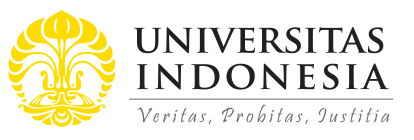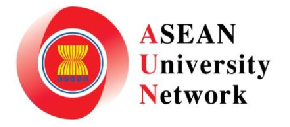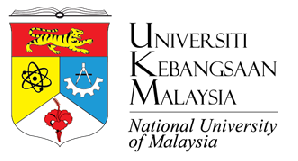
Abstract
This study identifies the problems faced by the residents of Banyuurip village and their adaptation efforts in preserving their mangrove areas. This paper aims to portray the community behavior dynamic in conserving the environment in line with the growth of pop culture in the social media era. Three components will be examined: first, the way people behave toward their environment; second, the economic pressure and the resources maximizing process, and the last component being the environmental issues that are framed in local political ecology. This paper uses the following five phases identified by the Sustainable Livelihood Framework (SLF): identifying vulnerabilities in the community, mapping the livelihood assets of the community, observing the transformation of structures and processes, identifying strategies implemented by the community, and formulating solutions. The SLF approach is useful for removing traditional barriers and is able to evaluate and modify the approach taken to follow the latest trends in society, by enriching the information gathered through this participation. This paper’s findings maintain that the mangrove conservation area in Banyuurip Village reassures the community of its potential use as conservation land and an alternative source of livelihood. However, the manpower required to conserve the mangrove consists mainly of senior residents and is partially supported by the younger generation. Conserving mangroves requires a lot of funds and is an arduous process. It requires support from several parties, such as local companies, mining companies, universities, government agencies, and others.
References
Alexander, D. E. (2010). The L'Aquila Earthquake of 6 April 2009 and Italian Government Policy on Disaster Response. Journal of Natural Resources Policy Research, 2(4), 325–342. https://doi.org/10.1080/19390459.2010.511450
Blaikie, P. M., & Brookfield, H. (1987). Land degradation and society: London: Methuen.
Boin, R. A., & 't Hart, P. (2010). Organising for Effective Emergency Management: Lessons from Research. Australian Journal of Public Administration, 69(4), 357. https://doi.org/10.1111/j.1467-8500.2010.00694.x
Carr, W., & Kemmis, S. (1986). Becoming critical: education, knowledge, and action research. London Philadelphia: London Philadelphia: Falmer Press.
Chambers, R., & Conway, G. (1992). Sustainable rural livelihoods: practical concepts for the 21st century. IDS Discussion Paper 296. http://opendocs.ids.ac.uk/opendocs/bitstream/handle/123456789/775/Dp296.pdf?sequence=1
Cooper, C. a. B., Robert. (2006). Disaster: Hurricane Katrina and the Failure of Homeland Security Publishers Weekly (Vol. 253, pp. 53). New York: New York: PWxyz, LLC.
Creswell, J. W. (2018). Research design: qualitative, quantitative, and mixed methods approaches/ John W. Creswell, J. David Creswell (Fifth edition. ed.): Thousand Oaks, California: SAGE Publications, Inc.
Dent, D. (2013). Rural Planning in Developing Countries: Supporting Natural Resource Management and Sustainable Livelihoods. Hoboken: Hoboken: Taylor and Francis.
Devine-Wright, P. (2013). Think global, act local? The relevance of place attachments and place identities in a climate changed world. Global Environmental Change, 23(1), 61–69. https://doi.org/10.1016/j.gloenvcha.2012.08.003
DFID. (1999). DFID sustainable livelihoods guidance sheets. Department for International Development. http://www.ennonline.net/resources/667
Doerfel, M. L. (2015). Networked forms of organizing, disaster-related disruptions, and public health. Organizations, communication, and health, 365–383.
Doerfel, M. L., Chewning, L. V., & Lai, C.-H. (2013). The Evolution of Networks and the Resilience of Interorganizational Relationships after Disaster. Communication Monographs, 80(4), 533–559. https://doi.org/10.1080/03637751.2013.828157
Fiksel, J. (2006). Sustainability and resilience: toward a systems approach. Sustainability: Science, Practice, & Policy, 2(2), 14-21.
https://doi.org/10.1080/15487733.2006.11907980
Fitrianto, A. R. (2019). The Socio-Economic Impacts of the Porong Mud Volcano on the Shrimp Fisheries Sector in Sidoarjo District, East Java Province, Indonesia. (Thesis (PhD)--Curtin University).
Franken, R. E., & Bauers, P. (2002). Human motivation: Wadsworth/Thomson Learning.
Gieryn, T. F. (2002). What Buildings Do. Theory and society, 31(1), 35–74. https://www.jstor.org/stable/658136
Giesen, W., Wulffraat, S., Zieren, M., & Scholten, L. (2007). Mangrove guidebook for Southeast Asia. Mangrove guidebook for Southeast Asia.
Hambrick, D. C., & Fredrickson, J. W. (2005). Are you sure you have a strategy? The Academy of Management Executive, 19(4), 48–59.
https://journals.aom.org/doi/abs/10.5465/AME.2005.19417907
Harvey, M., William, F., & Krista, E. P. (2000). History Repeats Itself, But How? City Character, Urban Tradition, and the Accomplishment of Place. American Sociological Review, 65(6), 791–823. https://doi.org/10.2307/2657514
Haywood, B. K. (2014). A "Sense of Place” in Public Participation in Scientific Research. Science Education, 98(1), 64–83. https://doi.org/10.1002/sce.21087
Hillyard, M. J. (2000). Public crisis management: How and why organizations work together to solve society's most threatening problems: iUniverse.
Iain, D.-H., & Fikret, B. (2003). Learning as You Journey: Anishinaabe Perception of Social-ecological Environments and Adaptive Learning. Conservation ecology, 8(1), 5. https://www.jstor.org/stable/26271978
Kapucu, N. (2008). Collaborative emergency management: better community organising, better public preparedness and response. Disasters, 32(2), 239-–262. https://doi.org/10.1111/j.1467-7717.2008.01037.x
Kaufman, J., & Kaliner, M. E. (2011). The re-accomplishment of place in twentieth century Vermont and New Hampshire: history repeats itself, until it doesn't. Theory and society, 40(2), 119–154. https://doi.org/10.1007/s11186-010-9132-2
Kemmis, S. A. (2014). The Action Research Planner: Doing Critical Participatory Action Research/ by Stephen Kemmis, Robin McTaggart, Rhonda Nixon: Singapore: Springer Singapore: Imprint: Springer.
Koshy, V. (2010). Action Research for Improving Practice: A Practical Guide. London: London: Sage Publications Ltd.
Ludi, E., & Slater, R. (2008). Using the Sustainable Livelihoods Framework to understand and tackle poverty. Poverty Wellbeing. http://www.poverty-wellbeing.net/document.php?itemID=2396&langID=1
McNiff, J. (2002). Action research: principles and practice/ Jean McNiff. Abingdon, Oxon: Routledge.
McNiff, J. (2010). You and your action research project/ Jean McNiff and Jack Whitehead. London, New York: Routledge.
Menzies, J., & Raskovic, M. (2020). Taming COVID-19 through social resilience: A meta-capability policy framework from Australia and New Zealand. AIB Insights, 20(3), 18165. https://pdfs.semanticscholar.org/c2c3/bbc01651d69f7574c6f91bef2716c5e98e5c.pdf
Missimer, M., Robèrt, K.-H., & Broman, G. (2017). A strategic approach to social sustainability–Part 1: exploring the social system. Journal of cleaner production, 140(Part 1), 32–41. https://doi.org/10.1016/j.jclepro.2016.03.170
Olsson, L., Jerneck, A., Thoren, H., Persson, J., & O'Byrne, D. (2015). Why resilience is unappealing to social science: Theoretical and empirical investigations of the scientific use of resilience. Science Advances, 1(4), e1400217-e1400217. https://doi.org/10.1126/sciadv.1400217
Parsons, T. (1951). The social system. Glencoe, Ill: Free Press.
Pedretti, E., & Hodson, D. (1995). From rhetoric to action: Implementing sts education through action research. Journal of Research in Science Teaching, 32(5), 463–485. https://doi.org/10.1002/tea.3660320505
Pettit, T. J., Fiksel, J., & Croxton, K. L. (2010). Ensuring supply chain resilience: Development of a conceptual framework. Journal of Business Logistics, 31(1), 1–21. https://doi.org/10.1002/j.2158-1592.2010.tb00125.x
Ponomarov, S. (2012). Antecedents and Consequences of Supply Chain Resilience: A Dynamic Capabilities Perspective. (Doctor of Philosophy), University of Tennessee. http://trace.tennessee.edu/cgi/viewcontent.cgi?article=2526&context=utk_graddiss
Remoundou, K., Koundouri, P., Kontogianni, A., Nunes, P. A., & Skourtos, M. (2009). Valuation of natural marine ecosystems: an economic perspective. Environmental Science & Policy, 12(7), 1040–1051. https://doi.org/10.1016/j.envsci.2009.06.006
Scoones, I. (1998). Sustainable rural livelihoods: a framework for analysis Vol. IDS Working Paper 72. http://www.ids.ac.uk/files/dmfile/Wp72.pdf
Scoones, I. (2009). Livelihood perspectives and rural development. Journal of Peasant Studies, 36(1), 171–196. https://doi.org/10.1080/03066150902820503
Scoones, I. (2015). Sustainable Livelihoods and Rural Development. Practical Action Publishing. https://opendocs.ids.ac.uk/opendocs/handle/20.500.12413/13895
Scoones, I. (2016). The Politics of Sustainability and Development. Annual Review of Environment and Resources, 41(1), 293–319. https://doi.org/10.1146/annurev-environ-110615-090039
Stedman, R. C. (2003). Is it really just a social construction?: The contribution of the physical environment to sense of place. Society &Natural Resources, 16(8), 671–685. https://doi.org/10.1080/08941920309189
Suparmoko, M. (2006). Panduan dan Analisis Valuasi Ekonomi Sumberdaya Alam dan Lingkungan (Konsep, Metode Perhitungan dan Aplikasi) [Guide and Economic Valuation Analysis of Natural Resources and Environment (Concepts, Calculation Methods and Applications)] (1 ed.). Yogyakarta: Penerbit BPFE-Yogyakarta.
Thomas, F. G. (2000). A Space for Place in Sociology. Annual Review of Sociology, 26(1), 463–496. https://doi.org/10.1146/annurev.soc.26.1.463
Vatria, B. (2013). Berbagai kegiatan manusia yang dapat menyebabkan terjadinya degradasi ekosistem pantai serta dampak yang ditimbulkannya [Various human activities that can lead to degradation of the coastal ecosystem and its impacts]. e-Journal Belian, PJ-Belian-9-1-Januari-2010.
Williams, D. R., & Patterson, M. E. (2007). Snapshots of What, Exactly? A Comment on Methodological Experimentation and Conceptual Foundations in Place Research. Society & Natural Resources, 20(10), 931-937.
Recommended Citation
Fitrianto, Achmad Room and Samsuri, Andriani
(2021).
A Rural Community’s Livelihood Dynamic in the maintenance of a Mangrove Area as a Tourist Destination.
ASEAN Journal of Community Engagement, 5(1), 105-129.
Available at: https://doi.org/10.7454/ajce.v5i1.1090







